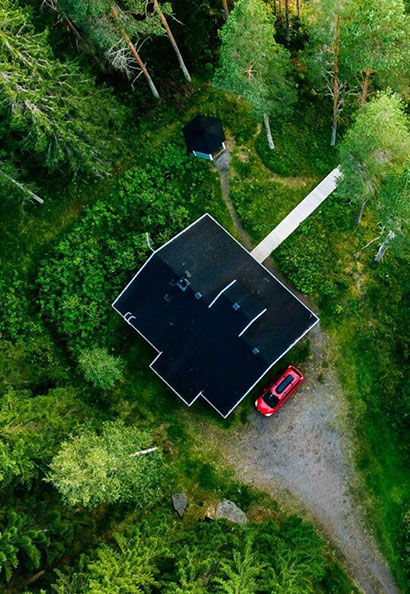It is a truth universally acknowledged that pollinators—including birds, bees, butterflies, and a host of lesser-known creatures—are essential to the health of gardens, and indeed the natural world. With pollinators, your gardens will flower better, your vegetable and fruit plants will be more productive, and your outdoor space will be alive with flitting butterflies and buzzing bees.
Like all creatures, pollinators have basic needs for survival; if you meet their needs, the pollinators will come. Here are some tips for luring pollinators to your garden.
PROVIDE FOOD AND WATER
Plant a variety of nectar- and pollen-rich flowers. A mixture of annuals, perennials, and shrubs that flower at different times is important so there is food for all throughout the growing season. Don’t forget to include plants such as dill, parsley, fennel, and milkweed that provide food for butterfly larvae.
All pollinators need water. Install a water garden or a birdbath or set out a saucer or flowerpot dish filled with water. Butterflies are attracted to muddy puddles, which they will flock to for needed salts and nutrients as well as water.
GROW ORGANIC
Toxic chemicals in the garden can kill non-targeted creatures as well as the pests. For example, a typical garden poison not only kills ants, flies, and Japanese beetles, it also can eradicate beneficial species such as lacewings, ladybird beetles, parasitic wasps, pollinators, and destroy essential soil organisms.
Rather than turning immediately to poisons, consider implementing a system called Integrated Pest Management (IPM), an environmentally sensitive approach to managing plant pests and diseases. Techniques include a combination of strategies such as introducing natural predators, modifying cultural practices, and growing resistant plant varieties to minimize pest problems. Two highly rated books on the subject are Integrated Pest Management: Concepts, Tactics, Strategies and Case Studies by Edward B. Radcliffe, William D. Hutchison, and Rafael E. Cancelado and IPM in Practice: Principles and Methods of Integrated Pest Management by Mary Louise Flint.
PROVIDE SHELTER
Like any living thing, pollinators need shelter to hide from predators, find refuge from storms, and rear their young. A recent trend is to provide bee hotels for mason and leaf cutter pollinating bees as well as bat and butterfly houses. In the wild, and ideally in your garden, pollinators use what is available. During a storm, butterflies and moths cling to the undersides of leaves, climb deep into tall grasses, or tuck themselves into cracks of rocks or trees. Birds shelter in shrubbery. Tall grass, dead trees, and dense shrubbery are all excellent shelters for solitary bees, birds, butterflies, and other pollinators.
PLANT FOR DIVERSITY
Entice a wide selection of pollinators to your garden by planting a diversity of plants, including flowers with different shapes. Tubular flowers, such as canna, penstemon, salvia, petunia, and snapdragon, attract hummingbirds. Bumblebees like flowers with large petals for landing platforms and native bees head for clusters of small flowers such as oregano or large rayed flowers, including sunflowers.
Floral color makes a difference. Bees gravitate to blue and yellow flowers (darker colors such as red appear black to bees), butterflies head to flowers in shades of orange, red, pink, and purple, especially if the blossoms are flat-topped or clustered and have short flower tubes.
Fragrance attracts pollinators too. Bees and butterflies head for the plants that release their aroma in the heat of the day. Night-bloomers such as evening primrose (Oenothera biennis), Madonna lily (Lilium candidum), night-blooming jasmine (Cestrum nocturnum), devil’s trumpets (Datura), night-scented stock (Matthiola longipetala), and some yucca species release their scent in the cool of the evening, attracting nighttime pollinators.
To learn more about how flowers attract pollinators, read the witty, irreverent, and highly illuminating book Sex in Your Garden by Angela Overy.
Now is the time to turn your garden into a haven both for you and your family as well as for the pollinators that will make your garden a healthier, more beautiful place.
Powerhouse Plants
Aster: bees, butterflies
Bee balm: bees, hummingbirds, butterflies
Butterfly weed: hummingbirds, butterflies, butterfly larvae
Cosmos: bees, butterflies
Delphinium: hummingbirds, butterflies
Fennel: butterflies, butterfly larvae
Foxglove: bees, hummingbirds
Globe thistle: bees, butterflies
Goldenrod: bees, butterflies
Hollyhock: bees, butterflies, butterfly larvae
Lavender: bees, butterflies
Liatris: hummingbirds, butterflies
Nasturtium: hummingbirds, butterflies
Phlox: hummingbirds, butterflies
Zinnia: bees, hummingbirds, butterflies


226.256.7999
amberjenings(at)peakpointrealestate(dotted)ca
peakpointre.realtor


